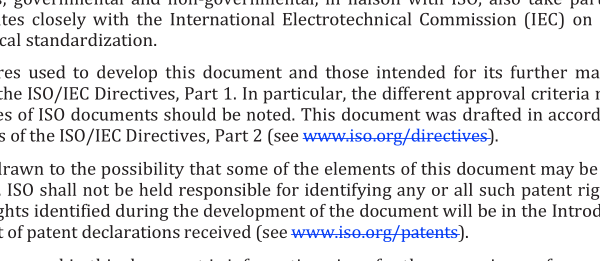ISO TS 16951:2021 pdf download – Road vehicles — Ergonomic aspects of transport information and control systems (TICS) — Procedures for determining priority of on-board messages presented to drivers.
4 Data collection for the priority index procedure 4.1 General This clause presents the steps for collecting the data used to calculate a priority index for each message. See the example outputs given in Annex E and Annex H . 4.2 Appoint an examiner The priority index procedure requires an examiner to coordinate the data preparation, analysis, and reporting. The role of the examiner is detailed in 4.7. The examiner shall be familiar with the prioritization process, knowledgeable on message management, and have automotive experience. If the examiner has similar qualifications to that of the evaluators, the examiner may participate as both an examiner and evaluator. 4.3 Identify and assemble messages It is necessary for the examiner to identify in advance messages that are to be presented to drivers. The messages represent the aggregate output given by the TICS and non-TICS connected to a message management system. The examiner shall collect these messages and prepare them for presentation to the evaluators. 4.4 Define driving context and situation For each message, the examiner shall define, or assist in defining, a driving context and situation in terms of the road environment and the traffic condition in which the message is likely to be presented. The contextual and situational factors should be defined at the moment when the message is presented because the priority (assignment of criticality and urgency ratings) depends heavily on the driving context. Particular attention should be given to the presentation of messages in potentially hazardous situations. All hazardous situations should be considered, except for highly unlikely possibilities. Based on these situations the examiner may define one or more (normally not more than four) scenarios for a particular message. The same message in two different scenarios shall be regarded as two different information items to be evaluated. This is because messages may occur in several different driving contexts, and each context could yield a different message priority. For example, the priority given to a message pertaining to a system malfunction will be different depending on whether the driver is starting the car or is relying on the system whilst driving. If only one scenario is used for a given message, that scenario should represent a reasonable “worst- case ” situation. At minimum, a TICS or non-TICS expert and the examiner should agree on the worst- case driving scenario. A traffic safety expert may also be consulted. 4.4.1 Consider the sensing capability of the vehicle In practice the messages that are provided to the driver will depend on the capability of the vehicle to sense or detect various relevant situations. For example, if the vehicle can detect the driver ’s state of arousal, then the driver ’s state can be considered in describing the driving scenario. For situations in which the vehicle is incapable of sensing, the message priority should be determined for a scenario representing a “reasonable” worst-case situation for the factors listed in 4.4.2 .
ISO TS 16951:2021 pdf download – Road vehicles — Ergonomic aspects of transport information and control systems (TICS) — Procedures for determining priority of on-board messages presented to drivers






